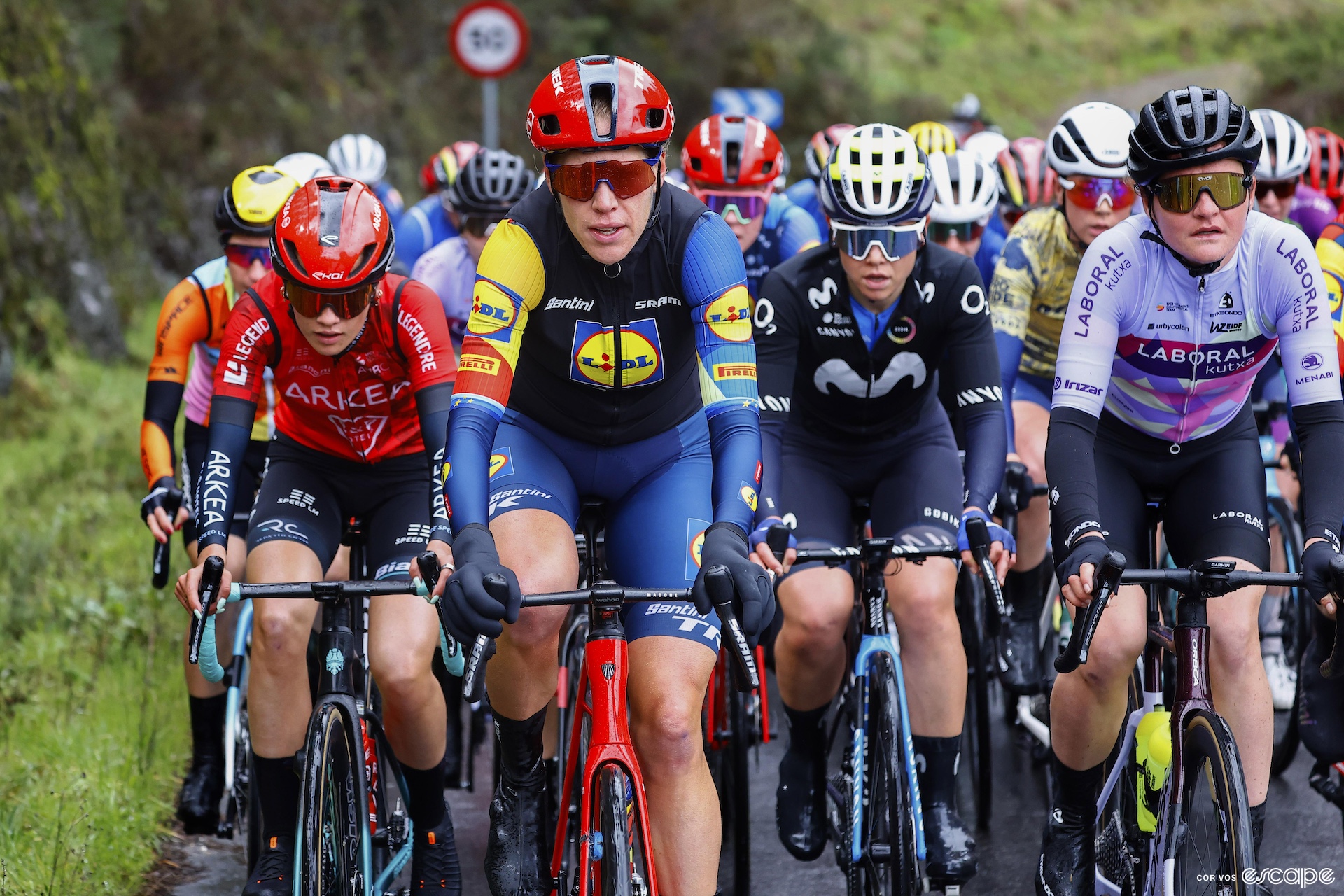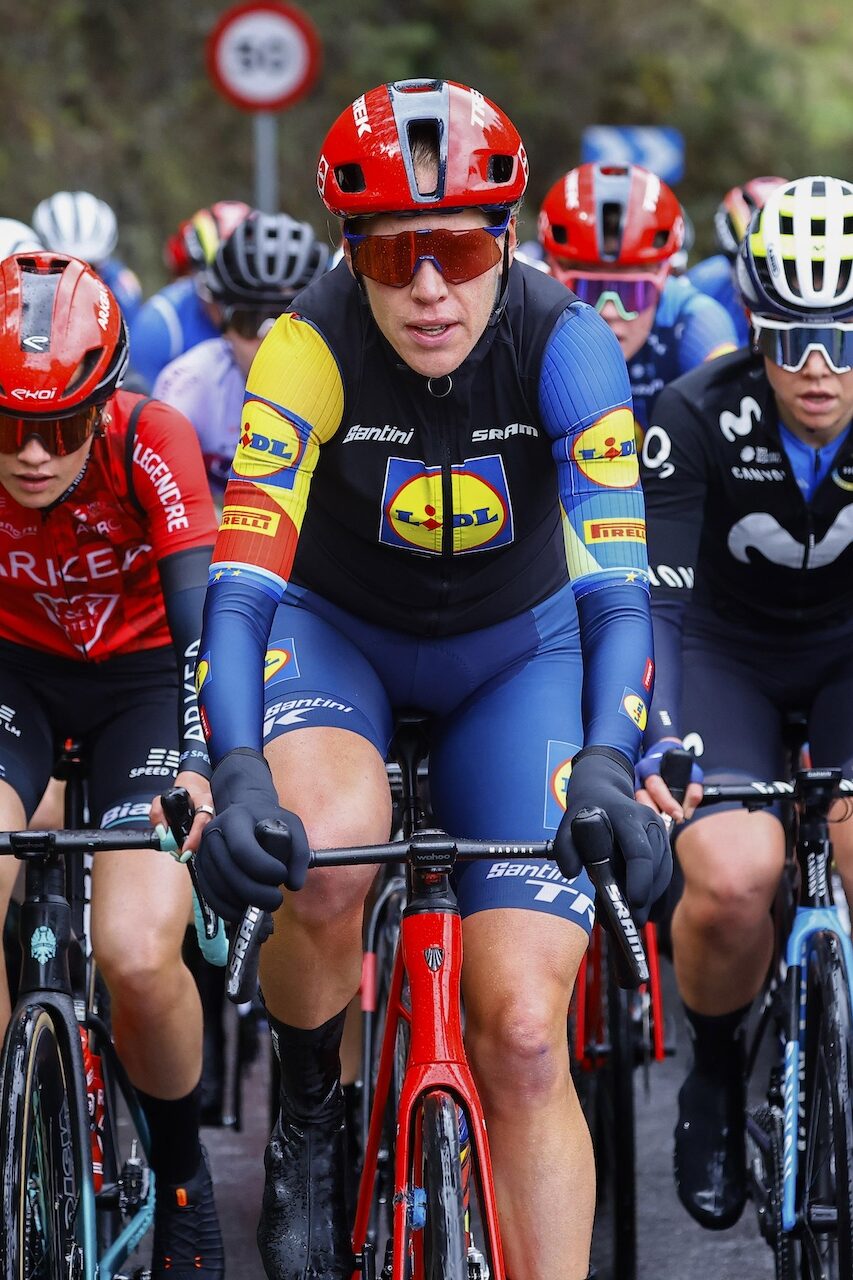Hello and thank you for opening this week’s edition of the Wheel Talk Newsletter.
Just three days into her return to racing Ellen van Dijk is already back on the top step; Lorena Wiebes won Ronde van Drenthe for the fourth edition in a row, and this weekend we’re shifting our attention back to Italy for Trofeo Alfredo Binda.
But first, you can actually sign up to get this newsletter straight to your inbox, did you know?
Ellen van Dijk is back.
The former European champion returned to racing at the Spanish 2.2 Vuelta Extremadura Féminas. In a three-stage race, Van Dijk had every intention of targeting the individual time trial on Sunday but found herself in the mix already in the first stage.
Whatever questions about the new mother’s form in her first race back were answered when her leadout dropped the rest of the remaining peloton, including her teammates. She delivered Canadian Olivia Baril of Movistar to victory, while Brodie Chapman rode into second and Van Dijk crossed the line fifth, but what is impressive here is the power she displayed in her effort.
As a 2.2 there are no radios, so the car would only have been able to communicate with riders if they came back to talk to the DS, but at that moment Van Dijk wouldn’t have really needed info from the car. It was the final stretch of the race, not much could be done at that point other than to trust your legs.
What is important to keep in mind coming out of this is that Lidl-Trek has their star domestique back. Someone to lead Elisa Balsamo into a sprint at Gent-Wevelgem. Someone to go toe to toe with Marlen Reusser. The tables are turning, and Lidl-Trek is on the right side.
Van Dijk went on to win the final stage time trial on Sunday, great news for her American team, but not such great news for her rival of the last four years Reusser.
Van Dijk finished the 17.2 km time trial stage 24 seconds faster than her teammate Brodie Chapman, who took second on the day. The performance by Chapman landed her in third on the overall podium next to her Italian teammate Gaia Realini in second. The two finished behind Mareille Meijering of Movistar who won the second stage with a late-race move.
With the lower-level Spanish race under her belt, Van Dijk looks ready to step into the WorldTour races. We’ll see what the team decides to do with their Dutch powerhouse in the coming weeks.
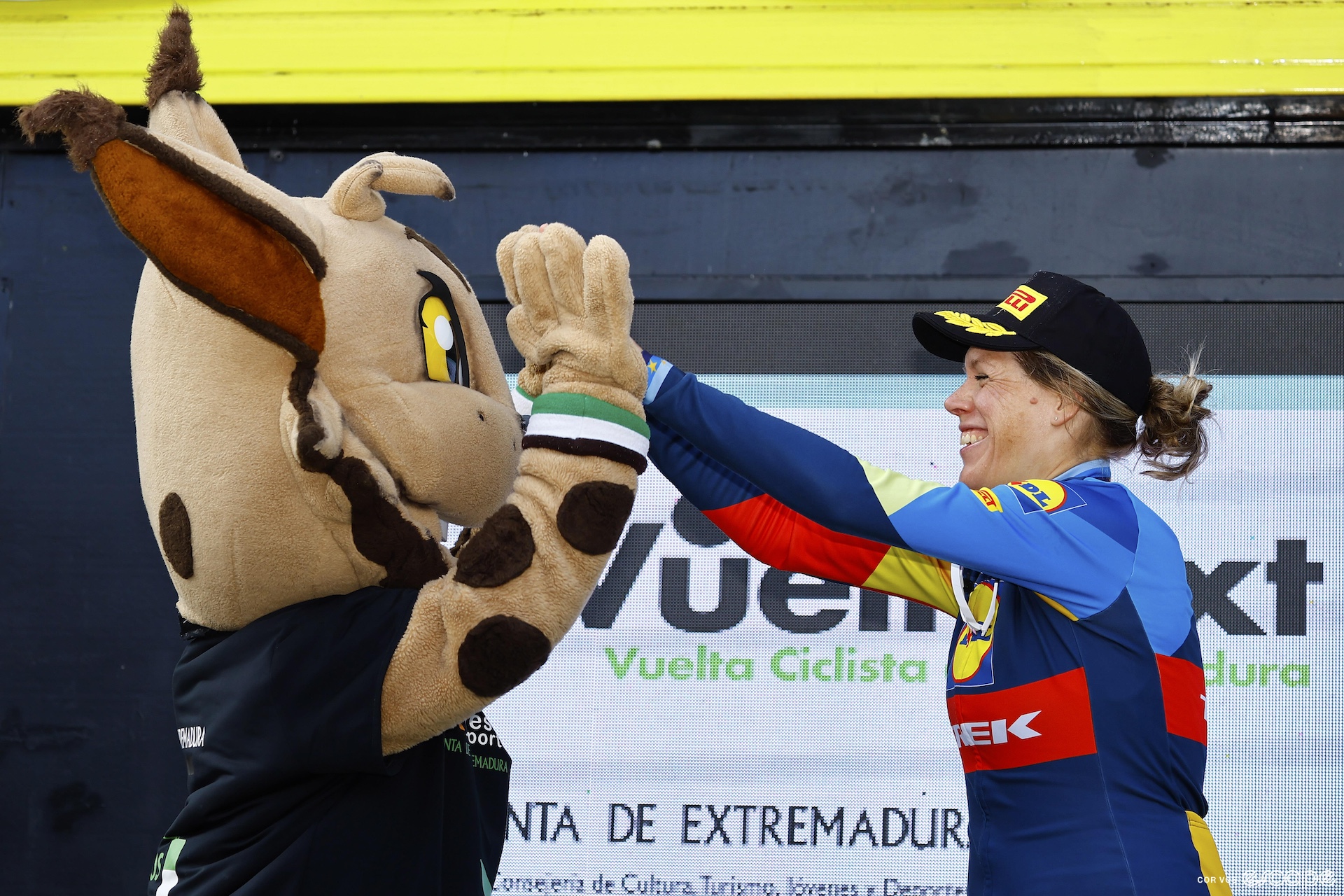
Racing continues…
At Trofeo Alfredo Binda!
One of a few races on the women’s Spring Calendar without an adjoining men’s race, Trofeo Alfredo Binda has become a kind of staple for the women’s peloton. However, as Flanders Classics and even the ASO (race organizers for Paris-Roubaix Femmes and the Tour de France Femmes avec Zwift) continue to move the needle, Binda is a step behind the rest of the Spring WorldTour season.
Trofeo Alfredo Binda has been around since 1974 and was one of the original races added to the WorldTour calendar when the UCI shifted women’s cycling from the World Cup model to the WWT in 2016. It’s been won by some of the biggest names in the sport: Marianne Vos, Lizzie Deignan, Elisa Longo Borghini…but in the last two years the biggest names have opted to skip it in favour of the growing Belgian schedule.
Last year Shirin van Anrooij took her first WorldTour victory thanks to an aggressive race by Trek-Segafredo. The Dutchwoman won solo, with her teammate Elisa Balsamo taking the reduced bunch sprint for second a year after she’d won the race herself.
Not that the race isn’t exciting. The course makes for an unpredictable and charged finale, and that the race isn’t suffocated by the top riders heightens the unexpected winner. It’s a good race, but one that would attract a deeper field if it was placed elsewhere in the calendar, say, just before Strade Bianche. Rumour has it the schedule will change in the future, but that’s for another newsletter.
The Basics
When? Sunday, March 17th
How to watch? 🇬🇧Discovery+, 🇺🇸Max, 🇨🇦FloBikes
Time to tune in? 14:30 CET/ 9:30 EDT
The Course
The best thing about this race is the course. After starting in *takes breath* Maccagno con Pino e Veddasca the peloton rides to Cittiglio where the peloton will turn onto a 17-ish km long circuit. The circuit contains two main climbs, but no part of it is chill. The Italian roads are windy and constantly changing, only once will any teams have a chance to chase any moves down, on a wider road near the finish line.
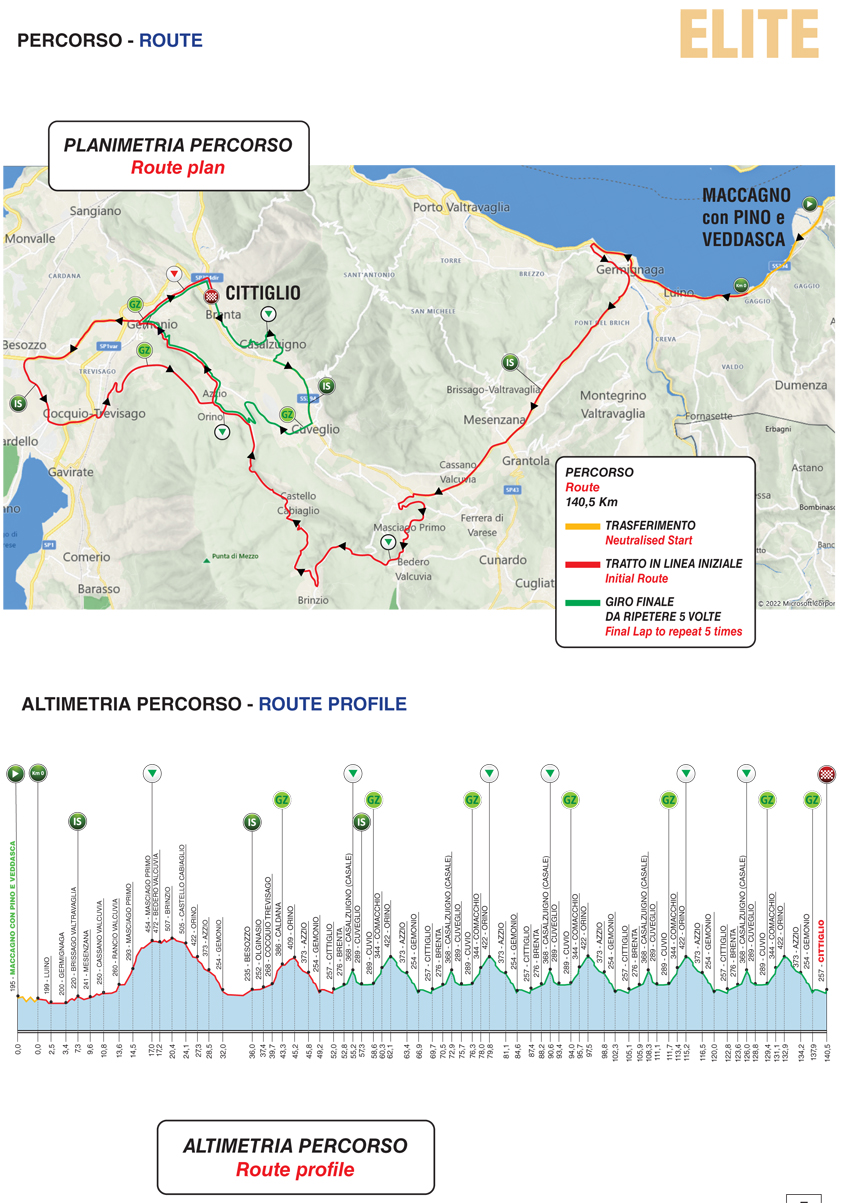
The women race the circuit five times, so by the penultimate lap, the legs will be feeling the ascents. The second climb of the circuit up to Orino is the longer of the two at 3 km, but with an average of 4.8%, it’s not exactly the Muur van Geraardsbergen. Coupled with the 1.9 km climb before it, it’s enough to at least test the legs of the sprinters.
As a whole, the course is challenging enough to be selective but not overly so. It’s enough to hand the win to a daring breakaway or a select group, but there’s always a chance that it will come back together like in 2022 when Balsamo won.
Because it favours nearly any type of rider we see an interested start list at this race, a combination of tried and true domestiques with a chance of their own, and young riders getting their WorldTour legs under them.
The Players
As of this writing, the start list is still nearly empty, so bear with me.
As mentioned, with its spot on the calendar and the added travel this race hasn’t attracted the top tier of the peloton in recent years. That hasn’t impacted the excitement of the racing, last year Shirin van Anrooij’s win was one of the best of the spring and boosted her road presence early in the season before she won the Tour de l’Avenir near the end of the year.
But, without knowing the start list, we can assume Demi Vollering, Kasia Niewiadoma, Elisa Longo Borghini, and even Lotte Kopecky will not be in Italy this weekend.
This hands leadership over to top domestiques or young riders. Van Anrooij is listed as returning to the race alongside 2022 winner Elisa Balsamo. If they can manage a victory it will be the fourth year in a row Lidl-Trek (formerly Trek-Segafredo) stood on the top step of this race.
SD Worx-Protime has Marlen Reusser on their expected roster, who started out her season with a win at Setmana Ciclista Valenciana. Can she add another one day to her palmares?
The race could easily go to Reusser or Balsamo (especially after how she rode at Drenthe), but it could also be a big win for Silvia Persico of UAE Team ADQ, for example. Or we could watch Puck Pieterse win her first WorldTour one day (she also rode well on Sunday).
Regardless of who lines up on Sunday, we are in for a dynamic race. Remember 2021 when Trek-Segafredo executed near-perfect teamwork for Elisa Longo Borghini?
Wheel Talk Podcast
Loren, Gracie and I sat down this week to break down Ronde van Drenthe, look ahead to what some performances mean for the upcoming Cobbled Classics, the return of Ellen van Dijk, and how Trofeo Alfredo Binda fits into the calendar.
Find the episode everywhere podcasts are found.
Let’s discuss
The mindset of a sprinter.
On the podcast this week we brought up the tactics of DSM Firmenich-PostNL at Ronde van Drenthe: how it looked like Pfeiffer Georgi might have been a better choice for the Dutch squad, especially in the finale where Charlotte Kool faltered on the final ascent. But going into a race with a top-level sprinter and changing the plan mid-race isn’t as easy as it sounds.
Sprinters need to have the physical attributes that push them across finish lines first – fast twitch fibres and raw power – but when it comes to a sprinter it’s the mindset that often separates them from the rest. A lot of riders have fast twitch muscles, but not every rider is as fearless and confident as a top-tier sprinter.
So what mental boxes does a sprinter need to check to be among the fastest in the world?
Adrenaline junkie
A sprinter needs to not only love the speed and fast-paced nature of a sprint, they need to thrive there. Split-second decisions that could end in glory or broken bones are the stakes when it comes to sprinting full gas. And when a sprint is done they will always want to go back for more.
Fearlessness
In the chaos of a sprint, one needs to be fearless. There’s something about the way the street looks when it’s lined with riders all gritting their teeth in agony. A sane person might balk at the sight of a ton of people in spandex hurtling towards a line of paint on the road, but not a sprinter. The overwhelming sound of gears shifting, competitors grunting, and fans screaming aren’t enough to rattle a sprinter. How many times has Lorena Wiebes nudged elbows with a rival and not batted an eye? I, for one, would wet myself.
Self-belief (bordering on cockiness)
They need to be able to go on instinct without any doubt that what they’re doing is the right call. Because of that sprinters often come off cocky or full of themselves. But when the team has been putting their legs on the line for you all day, when your director said you’re the one everyone is riding for, you best believe you can win the race. It’s a common misconception that sprinters are cocky, but oftentimes they leave that attitude out on the road.
This is where the conversation we had on the podcast comes in.
When I pointed out that DSM Firmenich-PostNL perhaps should have changed their game plan, Gracie (who has far more sprinter experience than me) pointed out that it’s not so easy to tell a sprinter it’s not their day.
“In general have a plan and stick to it because you can dissect it afterwards, but in this situation, I still think they did the right thing it just didn’t work in hindsight,” Gracie said on the podcast. “I don’t know what Kool was feeling or thinking during the race, I can say it’s very likely she was still backing herself because she is a sprinter.”
“Sprinters are a whole different species in the race. They will suffer. They will say, ‘It’s me today, I’ve got all the pressure, I don’t feel good but I know I can pull it out of the bad at the end if I can just get through this next phase of the race.'”
Gracie pointed out that if it was any other rider it is their responsibility to say they aren’t feeling it today, but being a pure sprinter it’s less likely they will ever not back themselves, for better or worse. This is not necessarily a bad thing, it’s why sprinters rack up so many wins throughout their careers or have a string of really good results.
But at the end of the day even when their legs aren’t good sprinters are winners, and they need to believe that in their very bones.
Love of speed
Because sprinting and speed are one and the same.
Hates to lose (sometimes more than love of winning)
One thing we know about Wiebes is that she hates to lose. She loves to win, of course; who doesn’t? But she hates to lose.
A lot of sprinters have a point to prove, probably more so on the men’s side, but it’s also true of the women. Even sprinters lose more races than they win, but the good ones win more sprints than they lose. Wiebes is nearly undefeated in sprints, and Kool is the next best of the bunch.
It all ties together. The desire to win, the confidence to push yourself to it while never backing down from the fight and never letting the inner demons in when it comes time to let loose.
“The difference between a good sprinter and a great sprinter is a great sprinter will never give up, even if they feel awful, they will get to the finish and they can win still. Not knowing [Kool] I would assume she has a bit of that mongrel in her, and that she would have just been like ‘I’m going to try’.”
There are a lot of other outside sources that sprinters need to win: The support of a great team and belief from both teammates and management, not to mention equipment. But mindset goes a long way.
The joys of social media
It’s not very often cycling coverage highlights the workers behind the scenes, the domestiques, those who have usually emptied the tank before the coverage starts. RCS’s video with Elisa Longo Borghini and longtime tank-emptier Lauretta Hanson is fantastic for so many reasons, but mostly because we rarely get to hear how it feels to give it all for your team leader.
Bonus social media of the week: Another G.O.A.T. who changed the game when it comes to motherhood in sports. Allyson Felix was one of the most high-profile athletes to have a baby mid-career and come back with a vengeance. The pregnancy cost her a title sponsor. Now in her second pregnancy, she is vocal about the differences between her experience back in 2017 and how the world of sport has adapted to mothers.
A picture worth a couple of words
Not every day is a great day on the bike. Sometimes everything that can go wrong does, which was the case for Lily Williams of Human Powered Health on Sunday at Ronde van Drenthe. But boy did she take it in stride. She still managed to land herself in the reduced peloton fighting for the win and finished 34th on the day.
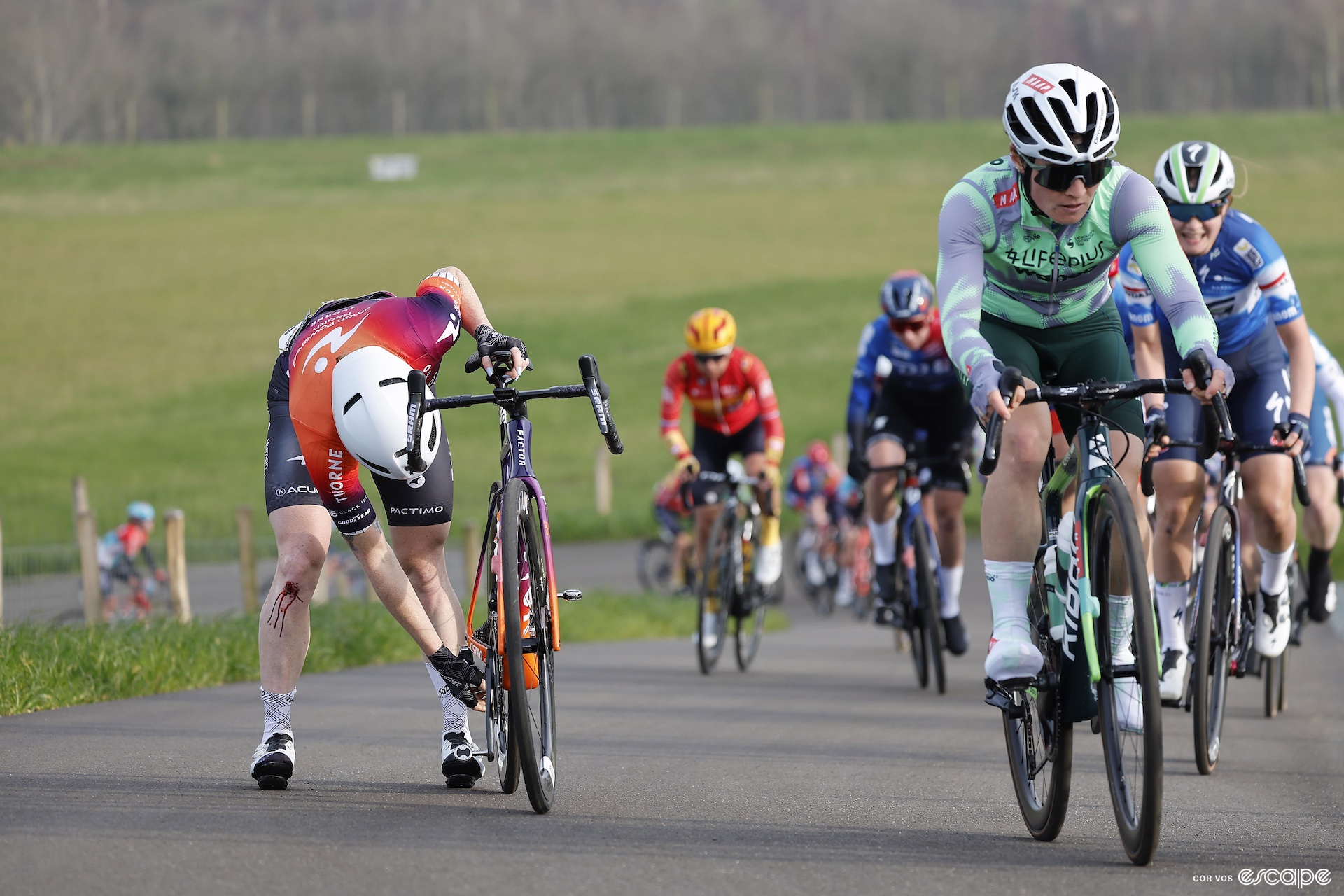
With a WorldTour one-day like Drenthe, it’s so easy to have your race end with a crash or a mechanical, and as you can see from the blood on Williams’s leg, she hit the ground. This photo was taken after the crash while on the VAM-Berg, as riders passed her. This could have been the end, but it wasn’t, and for that, she deserves some kudos.
Taylor Swift trivia
Loren mentioned on the podcast this week that she has spent some time recently obsessing over Taylor Swift, and I couldn’t be more proud.
She specifically mentioned Swift’s documentary, released in 2020 on Netflix, Miss Americana. If you’re on the fence about Swift, or Swift curious, I highly recommend setting aside 85 minutes to watch it.
Until next time!
Thank you so much for reading this week’s Wheel Talk Newsletter. If you have anything specifically you want me to cover in the upcoming newsletters, you can message me on the Escape Collective Discord or find me on social media @abimickey.
What did you think of this story?
